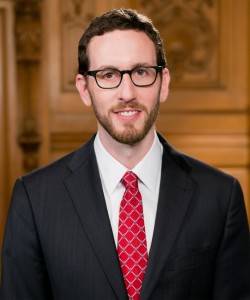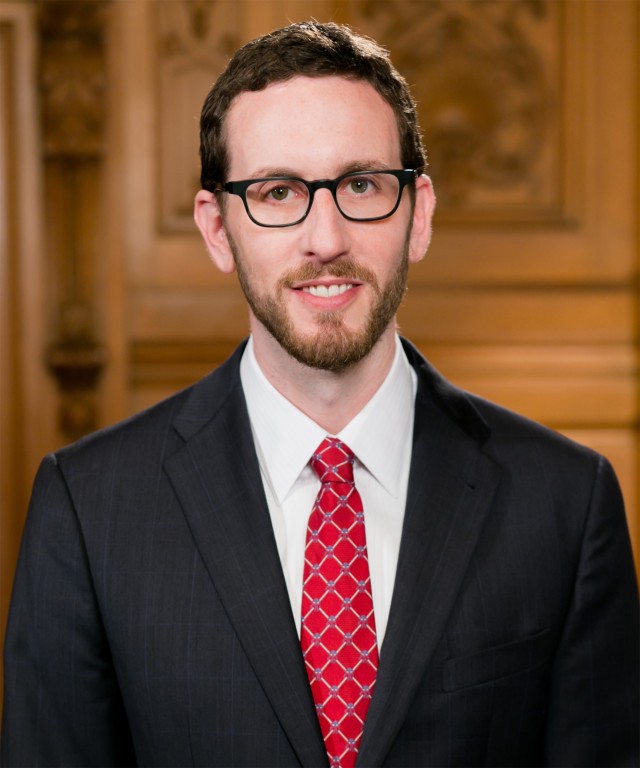In what homeless advocates call a “cruel” move, Sup. Scott Wiener is asking city departments to crack down on homeless people who are living on the sidewalks in tents.

The El Nino rains have brought a proliferation of tent cities along strips like Division Street, which is also under a highway and more protected. There are some in Wiener’s district, too.
So he’s written to the police chief, the fire chief, the director of public works, the director of public health, the head of human services and the mayor’s homeless coordinator and asked, “assuming the availability of shelter beds, what will be done to remove illegal tent encampments from our streets …. Or will the law continue to be ignored as it is being ignored today?”
He said that it’s a failure for the city “to make clear to those who refuse help that tents on our sidewalks and in our public spaces are unacceptable.”
The letter was first reported by KQED.
The thing about the tents: I don’t think they represent an increase in the homeless population. They seem to have arrived at the same time as the rains. I’m not sure where the homeless people got the money to buy the tents, but it seems entirely plausible that the tent cities are no different than existing homeless camps – except for the fact that Mayor Lee is driving homeless people out of downtown to make way for a party for rich people, which means there are more homeless residents in the neighborhoods.
And I wonder: Considering that the rains are a serious public health problem, and that the city doesn’t really have an alternative for a lot of the people living on the streets, isn’t it better that people have tents to sleep in? Wouldn’t there be more health issues (and possible deaths) if homeless people were sleeping in doorways and on sidewalks in the pouring rain?
Homeless service organizations have often sought to give out sleeping bags, particularly when it gets cold. Is that a problem?
Help us save local journalism!
Every tax-deductible donation helps us grow to cover the issues that mean the most to our community. Become a 48 Hills Hero and support the only daily progressive news source in the Bay Area.
The tents are exceptionally visible, and at a time when the city is trying to look good for the tourist world with all of these glitzy Super Bowl events, they are a reminder that all is not well in wealthy San Francisco. Is that a bad thing? Should we try to hide from the TV cameras that vast income and wealth gap in this city, the displacement that the tech boom has created, the reality that bringing great riches to San Francisco has also created great poverty?
I’m actually looking forward to the Super Bowl fans all over the world getting a bit of that message. It’s real. It’s what the people who run this city have done. And they shouldn’t be able to hide it behind golden “50” signs.
Here’s what the Coalition on Homelessness says:
According to Paul Boden, Executive Director of Western Regional Advocacy Project “There is simply nowhere for homeless people to go. They are sheltering themselves as best they can in leaking tents in the midst of a storm, and here Supervisor Wiener, in a low blow to people struggling to survive, calls on the city to enforce a tent ban. He seems to forget that only the most heartless San Franciscan would send humans to shiver in the cold.”
While the supervisor calls for transitioning those in tents into housing/shelter, he offers no viable solutions in his letter, and instead simply assumes there are enough shelter beds for all homeless people. He enquires about the number of vacant shelter beds, but does not ask how many seeking shelter are turned away. There are often empty shelter beds for a variety of reasons that are not available for shelter seekers, and dozens are sent away daily, while over 900 are on the waitlist for shelter. There is one shelter bed for every 5.5 homeless people, and there are over 8,000 households on public housing waitlist.
“Mr. Weiner’s letter is in direct contrast to the very spirit of the City of St. Francis. His timing was telling, as was his lack of solutions. Homeless people are suffering enough, and his letter was surprisingly cruel,” according to Jennifer Friedenbach, executive director of the Coalition on Homelessness.
Wiener told me that “it’s cruel to accept a status quo where tents line our streets and where people live in dangerous and unhealthy circumstances rather than in shelters or housing. I find it extraordinary that people who claim to advocate for the homeless would lash out at somebody who is simply asking questions and advocating that tents are not a homeless solution.”
On this I think we can all agree: Tents are not a long-term housing solution. On the other hand, for a long time we’ve taken a position in this city that harm-reduction is a good policy. Wiener told me that “we’re better off with people in shelters, even temporary shelter” than in tents.
Sure, if there are adequate shelters for all, that cater to the needs of all, and aren’t such a hassle that many refuse to deal with them.
But we don’t, any more than we have treatment on demand for every drug addict, or mental-health services on demand for every person who needs help, and in the meantime, we have needle-exchange to keep IV drug users from getting and spreading infections and we (should) try to keep mentally ill people from going to jail as a last resort. Bevan Dufty, when he was the homeless coordinator, suggested a subsidized “wet house” where alcoholics could live inside, and drink.
When it’s raining and people risk death from exposure, and when the city can’t offer shelters that work for all of them, isn’t it better that people are out of the rain? The tents don’t seem like such an awful thing. Better tents on the sidewalks than dead people on the sidewalks.
And instead of trying to get rid of them, let’s talk about why they are there in the first place. Wiener wants more data, and I would suggest he add a line: How many of the people in the tents are San Franciscans who are on the streets because they were evicted to make room for somebody with more money?






